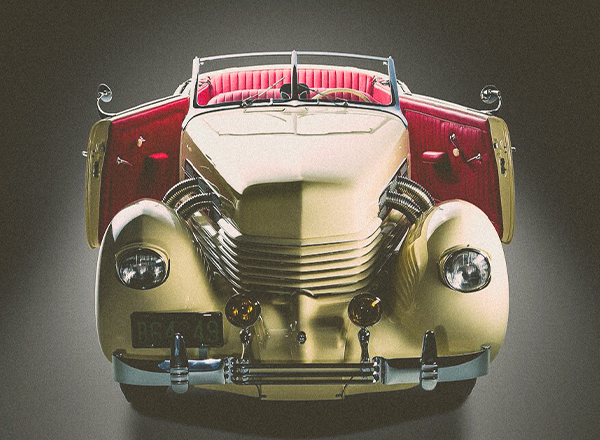Can I Get Regular Car Insurance for Classic
Classic Car Insurance vs. Regular Auto Insurance
Classic car insurance policies differ from regular auto insurance in several important ways. Regular auto insurance covers "daily drivers," which are either new or old cars driven more frequently than classic and collector vehicles. More frequent driving results in more accidents; this explains why your daily driver's auto insurance premiums will generally be much higher than what you'd pay to insure a collector vehicle.

Aside from cost, classic car insurance and regular auto insurance also differ in the way they determine settlement value for a total loss claim, maximum vehicle value, as well as vehicle eligibility and usage guidelines.
Classic car insurance:
- Eligible Vehicles: Classic Car insurance specializes in insuring cars of a certain age, e.g., 25+ years (such as antique, vintage, and classic cars) as well as collector / exotic cars which are collectible and have either appreciating values or stable prices.
- Value for a Total Loss Claim: Because classic/collectible cars appreciate, the maximum payment for a total loss claim (i.e., policy limit) in classic car insurance is selected at the start of the policy period. With Agreed Value insurance, the agreed upon value is selected by the customer and agreed to by the insurance company at the start of the policy (i.e., before a claim) based on the value of the vehicle.
- Maximum Vehicle Value Limit: Vehicle values agreed on in classic car insurance may be significantly higher than the purchase price when the vehicle was originally sold based. Vehicles may be valued above the Manufacturer Suggested Retail Price (MSRP) based on additional labor/money investments in restoring, improving and customizing a vehicle. Values can be increased if the vehicle undergoes a "numbers matching" restoration. The vehicle value can also significantly influenced by quality and extent of renovation. The value of the vehicle is impacted by the available supply (e.g., # originally produced by factory and # that have survived) as well as the demand for the particular year, make, and model. Finally, the car value may increase based on the historical significance of the vehicle.
- Vehicle Usage: Classic car insurance is designed for vehicles that are "collected" and are not driven regularly; to be eligible, classic car policies generally require proof that a customer has a daily-driven vehicle insured on a personal auto insurance policy.
Regular auto insurance:
- Eligible Vehicles: Regular auto insurance tends to insure newer mainstream vehicles which generally depreciate in value (i.e., are worth less as the vehicle ages). In addition, regular auto insurance also insures older vehicles which are the primary "daily-driven" vehicle driven by a driver on the policy.
- Value of a Total Loss Claim: With regular auto insurance, the value of a total loss claim payment is not known and is estimated after the total loss occurs. The vehicle value is estimated based on the actual cash value of the vehicle on the date of the accident.
- Maximum Vehicle Value: With regular auto insurance, the maximum vehicle value is generally determined based on the current selling price of similar Year / Make / Model Vehicles. Adjustments to the fair market value are made based on the vehicle's relative mileage, conditioning, and betterment. The maximum insurance value is based on the OEM equipment when the vehicle was manufactured; most aftermarket equipment/performance improvements are not considered in total loss valuation in regular auto insurance.
- Vehicle Usage: A "classic car" (i.e., >25 years old vehicle) can be insured on a regular auto insurance policy if it is the primary vehicle driven.
Relative Insurance Premium Cost Comparison:
Relative Insurance Premium Cost Comparison:The cost to insure a collector vehicle on a classic car insurance is often significantly less expensive than the cost to insure the same vehicle on standard auto policy (up to 40% less).
- Collector Vehicle is Not Driven Daily:Because the consumer is required to have his/her daily driver vehicle insured on a standard insurance policy, the vehicle on the classic car insurance policy is driven less frequently. In addition, the collector vehicle is driven on special/rare occasions and consequently, is generally driven more cautiously and carefully.
- Lower Accident Frequency = Lower Claim Costs: Because the vehicle is driven less frequently and not regularly driven in heavy traffic times, they tend to be involved in fewer accidents. Fewer accidents results in fewer injury claims and fewer at fault 3rd party collision claims.
Lower Claim Costs = Lower Insurance Premiums: Insurance is based on risk sharing and spreading claim payments across a large pool of individuals. As a result, lower claim costs result in more affordable (i.e., lower) insurance premiums for the collector car policyholder to insure his/her collector vehicle. Since Classic Car insurers tend to only insure the collector vehicle, the premiums are often significantly lower when compared to regular auto insurance.
Get a Quote
It's never been easier to get a classic car insurance quote. Get a free quote in minutes.
Get a Quote
Manage Your Policy
Login to submit a claim or manage your insurance policy details.
Submit a Claim
Can I Get Regular Car Insurance for Classic
Source: https://americancollectors.com/insurance/classic-vs-regular-auto-insurance/#:~:text=Vehicle%20Usage%3A%20A%20%E2%80%9Cclassic%20car,is%20the%20primary%20vehicle%20driven.